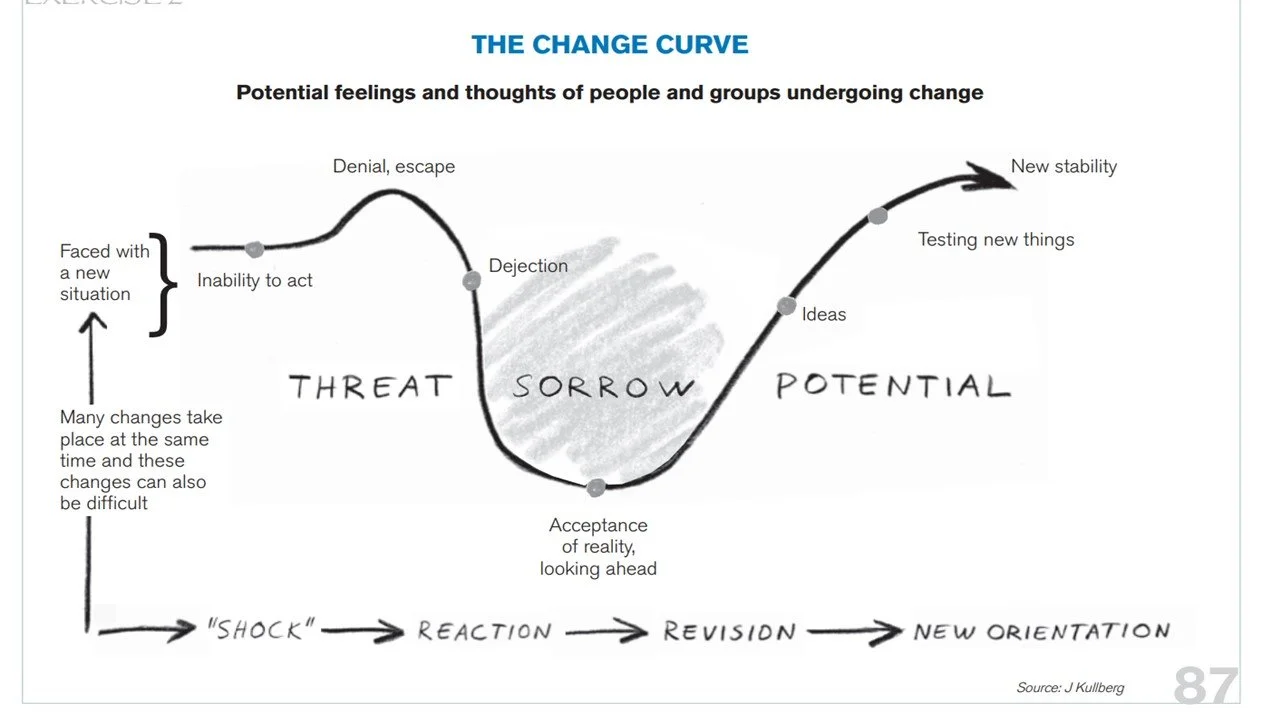Ensemble Interplay: Owning Change and Transformation
The JLP Trio
This past week we flew to Denver to do a workshop with a group of twenty senior leaders from an organization that has doubled in size within the past year and a half, and, as a result, is dealing with the pains and tensions of rapid growth. The need to re-structure to better serve their stakeholders was crucial as was a deep desire to understand how to work more cohesively as an executive unit. Without the latter, their work to serve society would be severely hampered.
This leadership group was familiar with our Jazz Leadership Project model as we had taken them through an initial session in February of this year. We now needed to help them address staff issues that were revealed through our Cultural Values and Ensemble Success Assessments. Issues of trust, confusion, bureaucracy, silo mentality, and hierarchy were the challenges they had to surmount in order to manage the myriad of changes required for the organization to succeed. Our workshop was an important opportunity to examine their cultural values and understand their work style interplay to reach a place where transformation was possible.
Our first objective was to help them, and by extension their staff, identify what stage they are at in the change process. The Change Curve above illustrates the stages that most people go through as they adjust to change. The core stages are all roughly the same: Shock, Reaction (denial, anger, bargaining, depression), followed by Acceptance, and eventually Commitment. Using the change curve can help people understand the emotional and psychological impact of change. With a mutual picture and an understanding of where they see themselves on the change curve, agreement on what actions are appropriate to aid in transformation are more easily attained.
Corcoran Holt, McClenty Hunter, and Benito Gonzalez
Our approach for the workshop focused on the JLP principles of Shared Leadership and Ensemble Mindset with exercises to explore ownership as a tool for transformation. Crucial to this process was hearing from our outstanding JLP Trio—Corcoran Holt on bass, Benito Gonzalez on keyboard, and McClenty Hunter on drums—musically and verbally.
As the participants in the workshop connected with each other through dialogues and exercises, they received a treasure trove of ensemble experience from the musicians on how they can work more efficiently, more productively, and more collaboratively.
Corcoran, McClenty, and Benito responded to: how to adjust to and incorporate new members into the ensemble; how to develop trust; how to perform with clarity and lessen confusion; how do they know when to start a tune and when to stop; and how do they innovate amid uncertainty.
A participant stood up and challenged the band to demonstrate. McClenty suggested that they begin to play but not count it off, so they really didn’t know what or how they were going to play. The musical journey they took the participants on—from an opening of free exploration to full swing on what turned out to be McCoy Tyner’s “Passion Dance”—brought the leaders to their feet in a standing ovation. The CEO of the company said that she got chills as they moved through their creative process. It was an extraordinary display of jazz principles and practices in action.
For a leadership team striving to change their culture and their relationship dynamics, the interplay of the ensemble provided moments of discovery, creativity, and motivation. It reinforced the beauty of jazz principles and practices to not only bring out the best in each individual, but as an open source for co-creation.



